Reform Or Wasted Opportunity?
by Ruthy Wexler
 On December 15 the Denver Public Schools (DPS) announced that it would close/restart three public elementary schools — Greenlee, John Amesse and Gilpin Montessori — pursuant to its new non-subjective School Performance Compact. The outcry was enormous with parents and teachers protesting vociferously. The dispute hit the news media with the local television stations and The Denver Post doing overview stories on the subject. One Denver School Board member called the decision “gut wrenching.”
On December 15 the Denver Public Schools (DPS) announced that it would close/restart three public elementary schools — Greenlee, John Amesse and Gilpin Montessori — pursuant to its new non-subjective School Performance Compact. The outcry was enormous with parents and teachers protesting vociferously. The dispute hit the news media with the local television stations and The Denver Post doing overview stories on the subject. One Denver School Board member called the decision “gut wrenching.”
As one of the targeted schools, Greenlee Elementary, is located in the Cherry Creek Valley, the Chronicle decided to drill down and find out exactly why DPS might be closing a school against the apparent, adamant opposition of a majority of its parents — and whether such a decision, in fact, made any sense.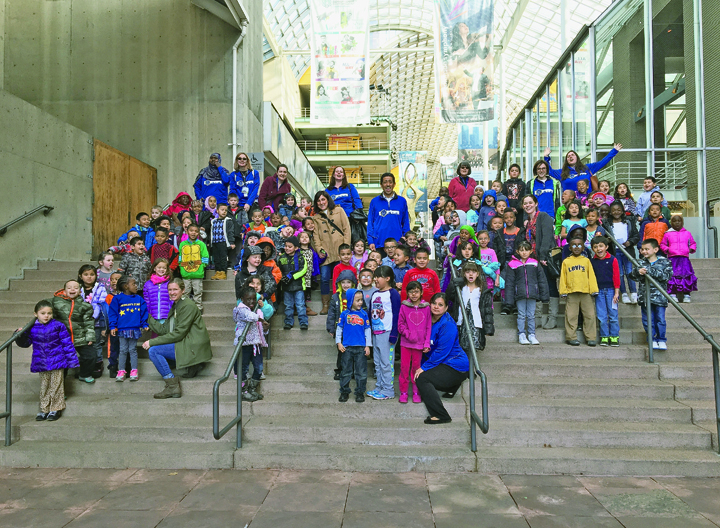
A (Measured) Work In Progress
On a sunny day in late January, Sheldon Reynolds, current principal of Greenlee, discussed his school with a visitor. A former teacher herself, the visitor kept expecting knocks on the door, announcing various crises. But the school hummed quietly around them as the affa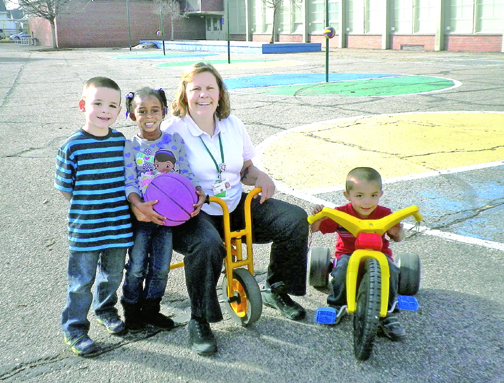 ble educator described practices he and his team had put in place in order to grow a “new culture” at Greenlee.
ble educator described practices he and his team had put in place in order to grow a “new culture” at Greenlee.
Sheldon — as he’s known in the community — has been principal for just a year and a half.
Occasionally, he allowed glimmers of pride to spark his eyes, telling of students who now believe they can succeed. At no time did he denounce standardized tests, the results of which have put his position in jeopardy.
Colorado students all take the CMAS PARCC state assessments every Ap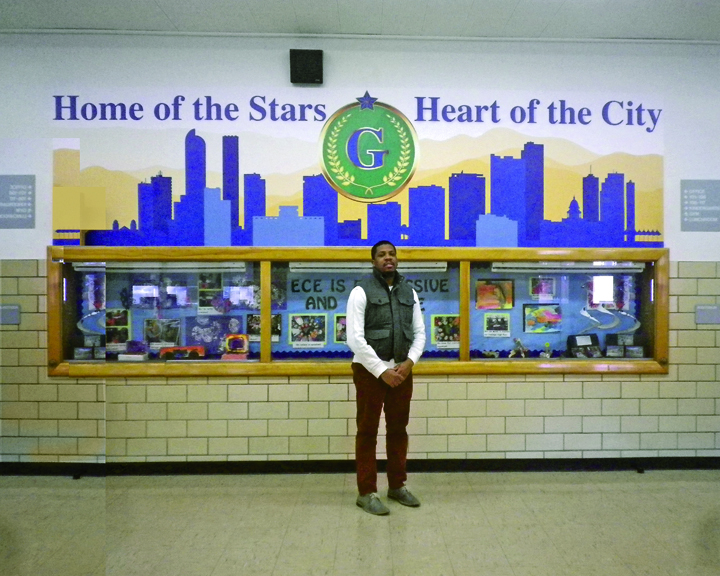 ril. These tests provide Median Growth Percentiles, a measure of how much a child has learned in a year. Results are combined into one “academic growth” score for the school.
ril. These tests provide Median Growth Percentiles, a measure of how much a child has learned in a year. Results are combined into one “academic growth” score for the school.
Before Reynolds came, Greenlee’s academic growth was measured at 27 percent. He’d been there only seven months when students took those tests again in April 2016; results had bloomed to 48.8 percent.
“I’m not opposed to standards, not at all,” said Reynolds, whose youthful looks belie years of experience. “What I take issue with is the pass or fail, all or nothing decision. DPS’s benchmark is 50 percent. We were essentially only one point away in academic growth, the indicator DPS values most!”
Making Connections
Academic growth is indeed what DPS cares about most. “We don’t judge where a student starts,” Tom Boasberg emphasized. “We care how much they improve in a certain time period. This philosophy is especially important in low income neighborhoods.”
Greenlee definitely falls into the category of low income neighborhood. Almost 95 percent of its students qualify for free or reduced lunch. Many live in public housing. Seventy percent are “direct certified”; i.e., students experiencing homelessness or foster care. Located at 1150 Lipan Street, Greenlee is a stone’s throw from the colorful Santa Fe Arts District. Isolated by poverty, residents may as well live on the other side of a wall.
“We want to remove those invisible barriers,” Reynolds said. “So we’ve made many community connections … the La Alma-Linc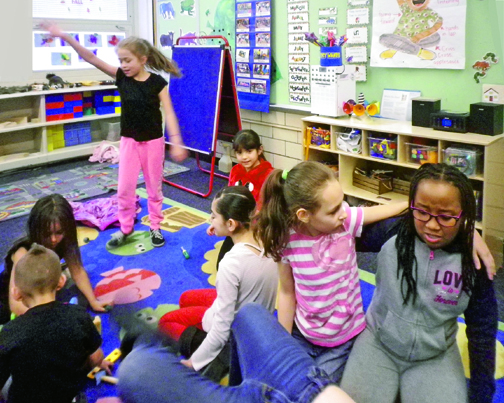 oln Park Neighbors Association, the Art District, a local veterinarian, an architect … We have a Running Club now, led by a local businessman. Black and brown kids see black and brown males in leadership positions; that breaks down barriers, too.
oln Park Neighbors Association, the Art District, a local veterinarian, an architect … We have a Running Club now, led by a local businessman. Black and brown kids see black and brown males in leadership positions; that breaks down barriers, too.
“And we’re not afraid to try something new! The community helped us go see The Nutcracker. Yup, all 300 of us!”
Three hundred students at the Denver Performing Arts Center? Weren’t there, um, discipline problems?
Reynolds tried to make the visitor understand. “We don’t concentrate on what our kids do wrong. If they make a mistake … we remind them of our school standards, our culture. They get a chance to correct that mistake.”
He grins. “We had a great time at The Nutcracker.”
Change
Reynolds never intended to go into education. “My dad was a 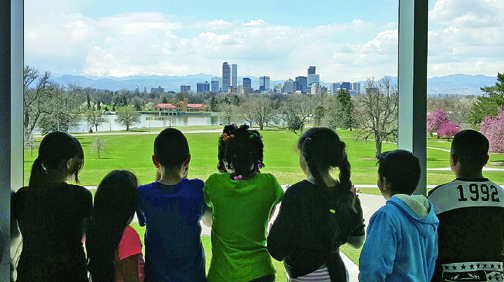 principal; I was going to do something else entirely.” Graduating from George Washington High, he chose a college in Las Vegas. But working one summer at his father’s school, Reynolds realized, “I want to work with kids.” He taught in Denver for a number of years, then took a job in North Carolina as assistant principal. After that, as principal, he built Lakewood Montessori into a high-performing, award-winning NC public school.
principal; I was going to do something else entirely.” Graduating from George Washington High, he chose a college in Las Vegas. But working one summer at his father’s school, Reynolds realized, “I want to work with kids.” He taught in Denver for a number of years, then took a job in North Carolina as assistant principal. After that, as principal, he built Lakewood Montessori into a high-performing, award-winning NC public school.
In August 2015, Reynolds came home to Denver: he’d been asked to take over Greenlee Elementary, a struggling school DPS had singled out for help back in 2010. Because he’d started Lakewood “from the ground up,” Reynolds felt he could do the same here.
“But you don’t just come in and start making changes,” he says. “You listen. You look around.
“What did I see? That the perception of the school wasn’t great. Things weren’t working. But I found some really strong pieces. The staff for one.”
Reynolds and his teachers created a five-year roadmap, a “Possibility Plan.” They adopted “HOME OF THE STARS, HEART OF THE CITY” as their slogan — and believed it. “We started building our culture through a talent dev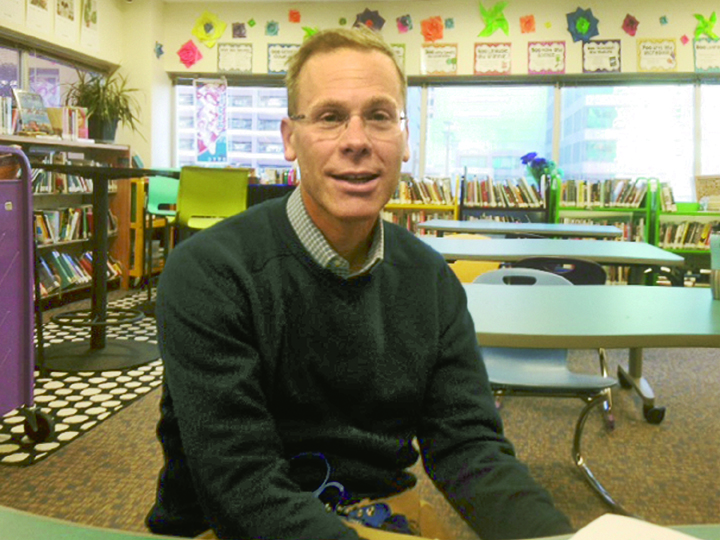 elopment model,” Reynolds explained. “If we see students as talented and gifted, they see themselves like that. We found talents — not just academic, but artistic, athletic, leadership — and built on them.
elopment model,” Reynolds explained. “If we see students as talented and gifted, they see themselves like that. We found talents — not just academic, but artistic, athletic, leadership — and built on them.
“We did it with teachers, too. I identified the most qualified teachers, they became leaders, coaching the others. That leads to mutual respect and better teaching all around.”
“He’s given teachers the opportunity to take on leadership and it makes us more dedicated, in our classrooms and to each other,” says art teacher Jessica Plate. “I’m part of the Cultural Leadership Team. We want our students to be expressive, healthy and enlightened.”
Before, bad behavior stood out. Now, teachers rewarded good behavior with extra recess and awards. Academics took on a joyous note: students who met reading goals got to spray their principal with silly string. A blown up photo of that giggly event hangs in a hall, alongside images of Greenlee students laughing, hugging, quietly thinking.
“All that love and respect you feel?” said a teacher. “That’s Sheldon.”
Karen Dunn, Head Start teacher for 17 years, says that Reynolds is the best thing that’s ever happened to Greenlee. “His idea, that we teach to the gifted students and have faith our other students will rise to that level? It works!”
“Yes, things have improved,” Reynolds allowed. “But it takes time — years, really — to build and sustain a quality neighborhood school.”
Denver Plan 2020
The leadership of DPS also formed a plan in 2015 with a five-year goal. The Denver Plan 2020 aims to have “at least 80 percent of district students attending a high-performing school by 2020.” Since approximately half that number are still in schools DPS considers lower-performing, Boasberg feels an urgency to “increase the quality of schools.”
Denver schools are assigned a numerical rating based on test scores and other factors, within DPS’s School Performance Framework. “If a school’s SPF rating remains low for multiple years, and if academic growth is poor in the most recent year, then we mark a school — and we hope never to do this — as designated,” said Boasberg. “That’s when we put the last piece in place, a School Quality Review (SQR).”
This review is done by an independent third party.
If a school doesn’t do well on the review (SQR), it’s in danger of being closed or restarted. (“Restart” means that DPS closes the school and reopens it with a different program, chosen from submitted applications. The winning plan usually changes staff. It always — unless the current principal’s plan is chosen — replaces the principal.)
To make the process of closing/restarting schools more “consistent and transparent,” this past fall DPS put in place a new policy, the School Performance Compact (SPC), with strict cutoffs; e.g., if a school received a “1” in any SQR category, that would be a trigger for closure.
Reynolds had been at Greenlee for three months when they had their first SQR.
He’d been there just seven months when testing occurred. The almost-doubled results fell just short of DPS’s decreed mark.
“If a school has less than 50.5 percent of the growth points, they continue on to the next step of the SPC process,” Boasberg said. “Greenlee was below that mark …” Thus, another review (SQR).
How Children Learn
School Quality Reviews in Denver are conducted by a Massachusetts-based consulting firm called SchoolWorks. On November 2 and 3, 2016, their three-person team, plus two DPS staff trained by SchoolWorks, came to Greenlee.
“What we do,” says Kim Wechtenhiser, who was an advocate for charter schools before she became president of SchoolWorks, “is collect evidence in relation to the protocol’s pre-identified indicators.”
In other words, they observe how student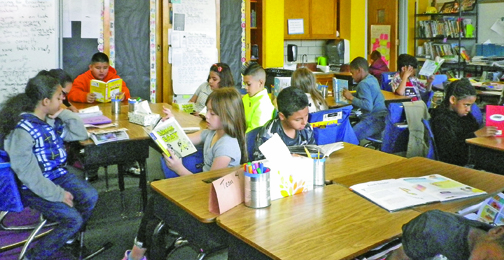 s learn. But they look through a narrow lens. Greenlee’s excellent Spanish class or its third grade teacher who instills a love of books in his students were not mentioned in the report, which reads like a business quarterly review. To wit: “The partially effective promotion of cognitive engagement was evident in 80 percent of classrooms visited.” “The development of higher-order thinking skills was ineffective in 50 percent of classrooms visited.” “Site visit team members noted that some, but not all, students were seen answering and asking questions … however, many were observed … staring off into space …”
s learn. But they look through a narrow lens. Greenlee’s excellent Spanish class or its third grade teacher who instills a love of books in his students were not mentioned in the report, which reads like a business quarterly review. To wit: “The partially effective promotion of cognitive engagement was evident in 80 percent of classrooms visited.” “The development of higher-order thinking skills was ineffective in 50 percent of classrooms visited.” “Site visit team members noted that some, but not all, students were seen answering and asking questions … however, many were observed … staring off into space …”
Asked about SchoolWorks’ report, Reynolds said equably, “Well, it’s a snapshot. Of that classroom, that day. For example, higher order thinking is very important. But you can’t just skip to it. The teacher might have just introduced the concept. [The report] did show things we want to work on. But SchoolWorks uses that snapshot as a diagnostic evaluation …”
Onwards And Upwards
By early December, the SchoolWorks reports were in. Greenlee received “1’s” in two categories.
“We received “1’s” on the exact same questions we received “2’s on the year before,” Reynolds commented wryly. “Our classroom ratings show improvement from 2015 to 2016 but our overall score was lower. We were told that SchoolWorks essentially re-normed or raised the expectations without informing anyone.”
In mid-December, Boasberg made his recommendation: Gilpin should be closed and Amesse and Greenlee should be restarted.
On December 15, crowds of parents and teachers pleaded with the Denver School Board to keep their schools open. Greenlee supporters, citing the Possibility Plan, said they’d begun their own restart. They begged the board to put the restart in Reynolds’s hands rather than someone with no knowledge of the neighborhood.
The Board refused all requests. They felt a responsibility, they said, to abide by their new policy.
On February 2, 2017, Tom Boasberg put out the call for applications to restart Amesse and Greenlee.
Reynolds was encouraged to submit an application.
Asked if he were angry, Reynolds paused. “We had reactions. But we move forward. I’m considering this an opportunity to make the school better than ever.”
Teachers and parents were not so sanguine.
“My child isn’t learning?” expostulated Gina Jones. “That’s B.S. My daughter hated math. Now she explains the concepts to me.”
“I’m very angry,” said parent Angie Huhman. “I love the vision Mr. Reynolds created for us.”
“People will feel betrayed if you get rid of this principal,” said Amanda Johns, with three children at Greenlee. “He turned the school around.”
“What are the kids supposed to think?” said another parent. “They see their teachers working so hard, their principal devoted to them, and then some strangers come in …”
If a new program is chosen, it would not begin until September 2018. “Imagine the tension of a year knowing you’re on the chopping block,” said Jessica Plate. “Already, fifth graders are stressed, they talk about it. This school will go down, not up, if Sheldon’s not part of the restart.”
There’s a large body of research about the harm done to low income communities when schools are closed. Space permits only one quote, the mildest. “Shutting down a school is hugely disruptive,” writes scholar Vontrose Deeds of Northwestern University. “It tears apart social ties … [often] undermining the very student outcomes policymakers are trying to improve.”
“If they change this school around now,” said an angry father, “they’re teaching my son something all right. They’re teaching him that we in this neighborhood don’t count.”
Two And Two Make …
Trying to make sense of it all, this reporter’s head spins.
DPS claims “parents deserve choice.” But Greenlee parents overwhelmingly choose the current principal.
Boasberg insists, “DPS restarts only persistently low performing schools.”
But Greenlee languished in the “low performing” category for years until Reynolds, in a year and a half, pushed its trajectory sharply upward.
Why not let the seeds he’s sown so skillfully bear fruit?
“DPS is up so high, they can’t see what’s on the ground,” said one Greenlee teacher, who, like many, declined to give her name. “They’re fixated on winning some sort of prize.”
At the recent confirmation hearings for Secretary of Education, Senator Michael Bennett bragged about the reform-minded Denver school system. On the DPS website, Tom Boasberg exclaims that Denver will educate low income children, “in a way that no other city in this country has done!”
In a letter dated Feb. 10, 2017 — the deadline for receiving restart applications — CEO’s of four charter school networks assure Boasberg they can help him reach his goal, if DPS opens more charter schools. “The deadline is rapidly approaching,” they warn, alluding to Plan Denver 2020.
By February 10, Reynolds had filed an application to lead a restart under a new name, the Greenlee Community School.
Two charter schools also filed applications to restart Greenlee.
In the end — SQR’s and SPC’s and “pre-identified indicators” pounding the brain — one image stands out: a support staff member, at Greenlee for years, coming over to say, “It’s all politics, nothing to do with us. We finally got a family goin’ on here. Why would they break up a family that’s working?”
For more information and to see more photos, visit www.glendalecherrycreek .com.
